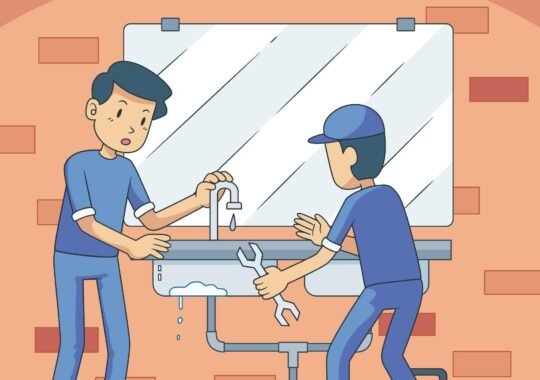How safe is your chimney for the cold season?
A quick check now can save trouble later. Look for cracks, blockages, or soot buildup that can cause smoke problems or fires. Make sure the flue opens and closes properly, and the chimney cap is in place.
Check inside for any signs of animals or nests. A clean, clear chimney helps your home stay warm and safe. Are you ready to learn simple steps to inspect it yourself and catch problems early? Don’t wait until it’s too late. Let’s dive in.
Check the Exterior of the Chimney
Before the cold season, start by looking at the outside of the chimney. Walk around the house and look closely at the bricks and mortar. Cracks or loose bricks can let water into the chimney, which can cause damage over time.
Check the flashing, which is the metal part where the chimney meets the roof. If it is bent, cracked, or rusted, water can seep inside. Even small cracks can get worse when the weather turns cold.
A careful look at the outside will help you spot problems before they become expensive repairs. If any issues are spotted, consulting chimney cleaning experts in Jackson can help ensure the chimney is safe and ready for the season.
Look Inside the Fireplace
Next, inspect the inside of the fireplace. The firebox is where the fire burns, and it can show signs of wear. Check for cracks, loose bricks, or areas where the mortar is falling apart.
Soot and ash can build up over time, so make sure the area is clean. Removing old debris helps the fire burn safely and improves airflow. A clean and intact firebox is important to prevent smoke from entering the room and to keep the chimney working well.
Inspect the Flue
The flue is the passage that carries smoke out of the house. Open the damper and make sure it moves freely. A stuck damper can stop smoke from escaping properly. Shine a flashlight up the flue and look for any soot or creosote buildup.
Creosote is a black, sticky substance that can catch fire if it gets too thick. Check for blockages like debris or small animals that may have climbed inside.
Keeping the flue clear and in good condition helps the chimney work safely and allows everyone in the home to feel safe during the cold season.
Examine the Chimney Cap
The chimney cap sits on top of the chimney and has a big job. It keeps rain, leaves, and animals from getting inside. Make sure the cap is in place and not loose or damaged.
A missing or broken cap can let water enter, which can damage the chimney from the inside. Caps also prevent birds and squirrels from nesting in the chimney. A strong and secure cap protects the chimney and the home from many potential problems.
Stay Warm and Safe: Finish Your Chimney Check Before the Cold Hits
Performing a basic chimney inspection before the cold season is an important step to keep your home safe and warm. Checking the exterior, firebox, flue, chimney cap, and signs of animals can help prevent serious problems like fires, smoke damage, or water leaks.
Even small issues can become costly if left unchecked. Taking the time to inspect your chimney allows you to catch potential hazards early. A well-maintained chimney gives peace of mind and lets everyone in the home feel safe and comfortable all winter long.





